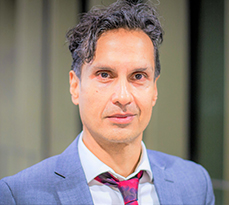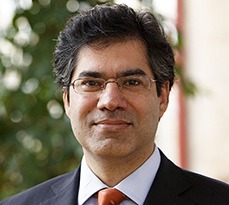Many movements don’t become successful businesses, so how did yoga transform from Hindu-inspired anti-materialism to a ‘Gospel of Sweat’ market worth $80 billion? A study from Cambridge Judge Business School shows the pathway.

Not every “movement” successfully becomes a market, be it the ancient Chinese practice of Tai Chi or biodynamic farming. So how did yoga, with its Hindu-inspired anti-materialist ethos, grow into a “Gospel of Sweat” market worth $80 billion? A study from Cambridge Judge Business School finds that the process is far more complex than merely “selling out”.
The study published in the journal Administrative Science Quarterly examines yoga’s rapid commercial rise since the mid-1970s, and concludes that yoga was “de-essentialised” – an untethering process that stripped away key aspects of its history, context and religious commitments in a way that transformed collective goals into individual pursuits.
Yoga’s transformation from a sacred movement to a thriving market was “remarkable”, the authors conclude. “A meditative and spiritual practice with the ultimate aims of self-diminution, ego transcendence, and union with the divine was transformed into a ‘certifiable’, priceable, and user-friendly product with different proprietary versions promising a positive body image, fitness, and stress-relief that could be bought and sold in the market.”

The study – entitled “From Patañjali to the ‘Gospel of Sweat’: Yoga’s Remarkable Transformation from a Sacred Movement into a Thriving Global Market” – is co-authored by Kamal Munir, Reader in Strategy & Policy at Cambridge Judge Business School; Shahzad Ansari, Professor of Strategy & Innovation at Cambridge Judge Business School; and Deborah Brown, a yoga instructor and the founder of Mmaa Social, a Cambridge-based social venture.
Patañjali was an Indian sage who 2,000 years ago wrote the seminal texts on “yoga”, which derives from the Sanskrit word “Yuj” meaning “union” or “binding together”. The eight “limbs” of yoga include abstinences, observances and concentration. “This ascetic, anti-market movement which started in India and arrived in earnest on American shores in 1893 came to be at the center of an $80 billion global market in 2016, one-fifth of which was in the United States,” the study says.
The study says that yoga is a “particularly fertile” setting for investigating how counter-cultural movements resolve conflicts in order to accommodate market mechanisms and scale up, given that yoga’s central codes “were meant to provide an antidote to the individualism and consumerism fostered by capitalism”. Such reconciliation is “not inevitable”, so the key is for such anti-market movements to “not simply integrate or fuse with markets, but transform to become syncretic” or highly compatible with them.
The study identifies three elements to the “de-essentialising” process that allowed such a transformation for yoga: selectively stripping a movement of its market-fettering “baggage”; converting a movement’s collectivist ethos into an individualist one; and obscuring a movement’s historical context to make it marketable. Another key factor was the “borrowing” of codes from other movements and markets, such as from the New Age, holistic health, and fitness movements.
The study period begins in 1975 because most changes that led to a thriving yoga market occurred since then and a key information source, Yoga Journal, is available only from that date. The publication’s evolution reflects the profound changes in yoga in the US since the mid-1970s, “from a movement underpinned by a religious and meditative philosophy that took years to learn, to one that advocated weekend courses to become a yoga instructor.” Beyond Yoga Journal, the study draws on a dozen academic books on yoga and more than 60 interviews with people involved in yoga including studio owners, teachers, practitioners and entrepreneurs.
“When Yoga Journal was launched in 1975, yoga was essentially a philosophy that prescribed a particular code of life aimed at ultimate liberation or enlightenment,” the study says. “By 2005, however, it had been transformed beyond all recognition. Yoga’s strict moral and ethical codes as well as its aspiration to attain enlightenment had largely been discarded as the physical practice dominated. Yoga became a workout which promised to give practitioners a slender, toned body, sexual prowess, youthfulness, a calm mind, and relief from everyday stress.”
Many letters to the publication protested the commercialisation and decoupling of yoga from its Hindu roots, to little avail, as yoga’s evolution meant that by around the turn of the millennium it was “increasingly associated with a better-looking butt,” the authors say.


